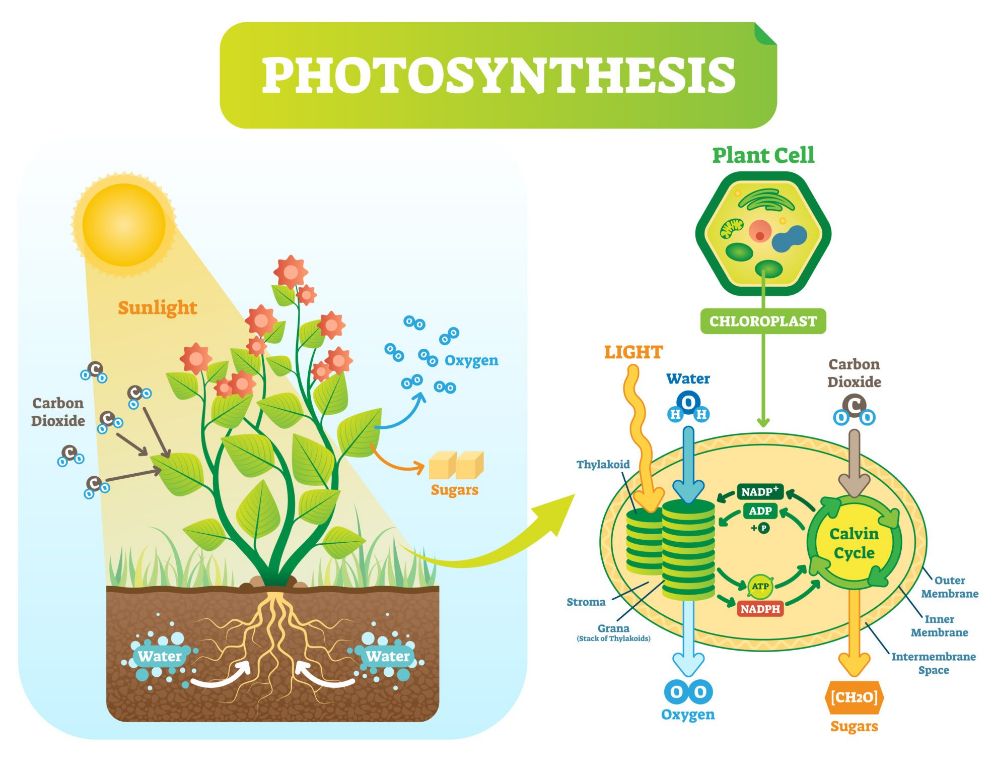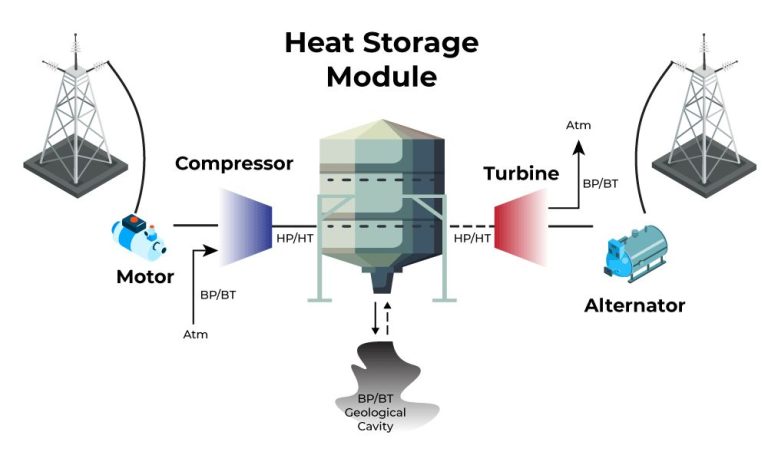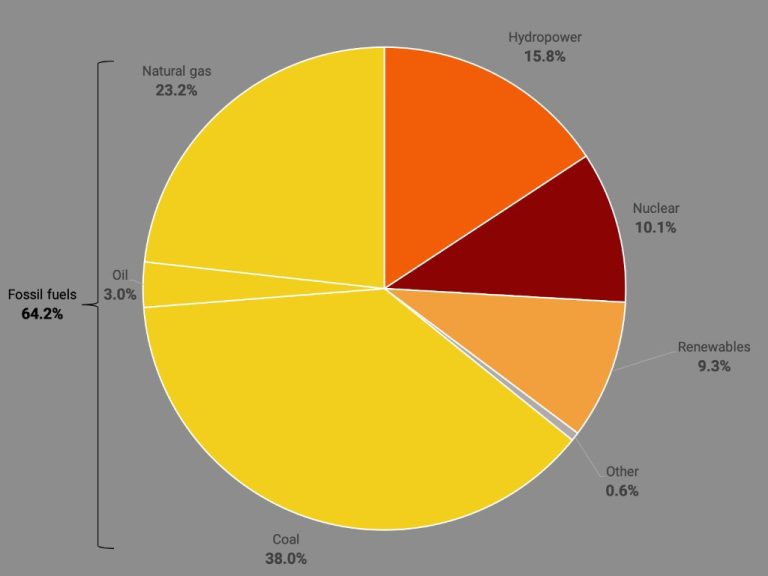What Is The Necessity Of Light?
Light plays a critical role in life on Earth. Light consists of electromagnetic radiation and is emitted by sources like the sun, stars, lamps, fires, and objects with high temperatures. The properties of light include wavelength, frequency, color, speed, and directionality of propagation. Electromagnetic radiation can be classified into different types based on the range of wavelengths, such as radio waves, microwaves, infrared waves, visible light, ultraviolet waves, X-rays, and gamma rays. Visible light in particular, which has wavelengths from 400 to 700 nanometers, enables various biological processes and nature’s energy cycle.
Understanding what light is and how it behaves is fundamental to comprehending many natural phenomena, scientific principles, and even human health and technology. By illuminating Earth, providing energy, and enabling vision, light makes life possible and shapes the living world around us. This article will explore the diverse and crucial roles that light plays across different domains, affirming its necessity for life as we know it.
Photosynthesis

Photosynthesis is the process plants and some algae use to convert sunlight into chemical energy they can use as fuel. During photosynthesis, plants absorb light through their leaves, which triggers a chemical reaction that splits water molecules into hydrogen and oxygen. The plant combines the hydrogen with carbon dioxide to create carbohydrates it can use for energy as well as oxygen, which is released into the air.
Without light, plants cannot undergo photosynthesis and produce the food they need to survive and grow. Sunlight provides the energy that powers this critical reaction. Different wavelengths of light drive different parts of the photosynthesis process. Red wavelengths play an important role in photosynthesis, as they are most efficiently absorbed by the pigments that plants use to capture light energy.
Light levels, duration, and quality all impact the rate of photosynthesis. Plants growing in low light conditions will have slower growth and reduced yields compared to those growing in bright sunlight. As sunlight fuels photosynthesis, access to sufficient light is one of the most fundamental requirements for plant health and agricultural productivity.
Vision
Light is absolutely essential for vision in both humans and animals. The eye contains light-sensitive cells called photoreceptors that convert light into electrical signals. These photoreceptors consist of rods, which detect light and dark, shapes, and movement, and cones, which detect color.
When light enters the eye, it passes through the cornea and lens which focus the light onto the retina. The retina contains the photoreceptors along with neurons that begin processing the visual information. The photoreceptors detect the light and send signals to the optic nerve which carries the signals to the visual cortex of the brain. Here the signals are processed into the images we see.
Without light entering the eye, the photoreceptors have nothing to detect and convert into visual signals. This is why when it is completely dark, humans and animals cannot see anything – no light is entering the eye to trigger our visual system. Light is the crucial first step in the complex process that enables us to see.
Vitamin D Production
Vitamin D is an essential vitamin that plays a crucial role in bone health and many other biological functions. Our bodies can synthesize vitamin D when our skin is exposed to ultraviolet B (UVB) radiation from sunlight. When UVB rays hit our skin, it triggers a chemical reaction that converts cholesterol in the skin into an inactive form of vitamin D. This inactive form then goes through a two-step activation process in the liver and kidneys to become the biologically active form of vitamin D.
Adequate vitamin D levels are important for calcium absorption and maintaining bone strength. Low vitamin D is associated with an increased risk of bone diseases like osteomalacia (softening of the bones) in adults and rickets (soft and weak bones) in children. Vitamin D may also play a role in immune system function, cardiovascular health, cancer prevention, and more.
Since very few foods naturally contain vitamin D, sunlight exposure is the primary way most people meet their vitamin D needs. Spending 5-30 minutes in peak sunlight two to three times per week allows light-skinned individuals to produce sufficient vitamin D. Those with darker skin require longer sunlight exposure to generate adequate vitamin D due to higher amounts of melanin. When sunlight is limited, vitamin D supplementation may be necessary to prevent deficiency.
Circadian Rhythms
Light plays a crucial role in regulating circadian rhythms and sleep cycles in humans and animals. Circadian rhythms are the roughly 24-hour cycles governing our biological and physiological processes. These cycles tell our bodies when to feel awake or sleepy and influence hormone levels, body temperature, and other functions.
Light, especially sunlight, is the main cue that synchronizes our circadian clock each day. Specialized photoreceptor cells in the eye detect light and send signals to the brain’s suprachiasmatic nucleus, which regulates circadian rhythms. This daily resetting by light stabilizes our sleep/wake cycle and other rhythms.
When people are exposed to light at night, it can disrupt normal circadian rhythms. Artificial light suppresses the body’s production of the sleep-promoting hormone melatonin. This makes it harder to fall and stay asleep. Irregular light exposure has been linked with poor sleep quality, daytime fatigue, and increased obesity risk.
To maintain healthy circadian cycles, experts recommend avoiding bright light in the evenings and getting regular daylight exposure, especially early in the day. Proper light exposure helps synchronize our body clocks and has widespread benefits for sleep, cognition, mood, and health.
Agriculture
Light is absolutely critical for plant growth and agricultural production. Plants use light energy from the sun to power photosynthesis, the process by which they convert carbon dioxide and water into glucose and oxygen. Photosynthesis allows plants to grow, produce energy, and create the building blocks they need to thrive. Without adequate sunlight, plants would be unable to photosynthesize properly, leading to reduced growth and crop yields.
The quality, intensity, and duration of light all impact plant growth and development. Most plants require full-spectrum light in the blue to red wavelength range. Blue light is important for vegetative leaf growth, while red light drives flowering and fruit production. The duration of light exposure also triggers key developmental stages like germination, flowering, and dormancy. Farmers carefully control lighting conditions in greenhouses to optimize plant growth. They supplement natural daylight with artificial grow lights to ensure adequate intensity and adjust photoperiods to match each crop’s needs.
Outdoor farming is also heavily influenced by sunlight. The number of daylight hours and angle of the sun shifts across seasons, impacting everything from planting schedules to water requirements. Insufficient sunlight due to weather, shade, or latitude can reduce yields and crop quality. Strategic planting arrangements, row orientations, and use of reflectors or artificial lighting help maximize light interception in farm fields. Overall, optimizing light conditions is critical for achieving the high productivity and quality required in agriculture.
Solar Energy
Light is essential for harnessing solar power. Solar panels contain photovoltaic cells that convert sunlight into electricity through the photovoltaic effect. When photons from sunlight hit these cells, they excite electrons and generate an electric current. This electricity can then be used to power homes, buildings, and devices or fed into the grid. Solar technology has become more efficient and affordable over time, enabling rapid growth in solar installations globally. Some key types of solar technologies include:
- Photovoltaic (PV) panels – convert light directly into electricity via the photovoltaic effect.
- Concentrated solar power (CSP) – use mirrors to concentrate sunlight to drive traditional steam turbines.
- Solar hot water – uses sunlight to heat water for residential and commercial use.
Solar energy offers several advantages, including reduced carbon emissions, energy independence through local generation, and cost savings over time. With solar prices declining and efficiency improving, solar is becoming an increasingly attractive renewable energy source to harness the power of light.
Safety and Navigation
Light plays a critical role in safety, navigation, and transportation. It allows us to see potential hazards, find our way, and operate vehicles safely. Some examples of how light aids in these areas include:
- Streetlights, car headlights, and flashlights allow us to see obstacles and dangers in the dark that could otherwise lead to accidents. Reflective materials also utilize light to increase visibility of road signs, lane markings, and pedestrians.
- Lighthouses and buoy lights have long been used to warn marine vessels of shorelines, shallow waters, and other navigation hazards. Ships also rely on light signals to communicate and avoid collisions.
- Runway lighting and aircraft navigation lights are essential for pilots to take off, land, and avoid other planes safely at night or in low visibility. Traffic lights and railway signals facilitate safe and efficient transportation on roads and trains.
- Reflective paints, strips, and tapes on signs, bikes, clothing, etc. use light from car headlights, flashlights, and other sources to make people and objects more visible and prevent accidents in dark conditions.
In summary, artificial lighting and reflective materials that interact with natural and artificial light sources allow for improved hazard visibility, navigation, and the safe operation of all forms of transportation. This is a key reason why access to light is so important for modern life.
Psychology and Mood
Light exposure plays a significant role in regulating mood, mental health, and depression. Several neurotransmitters and hormones in the brain are influenced by light signals from the eyes. When people are deprived of adequate daylight, it can disrupt circadian rhythms and result in symptoms of seasonal affective disorder (SAD). This makes people feel tired, unmotivated, and depressed during the winter when there is less sunlight. Researchers have found that bright light therapy and increased time outdoors on sunny days can relieve SAD symptoms and improve mood. Exposure to sunlight also lowers the stress hormone cortisol and stimulates serotonin and endorphins that boost mood. Getting enough natural light exposure during the day helps align circadian rhythms, resulting in better sleep quality at night. Poor sleep is linked to mental health issues like anxiety and depression. The connection between light and mood emphasizes the importance of adequate sunlight exposure for regulating emotions and maintaining psychological wellbeing.
Conclusion
As seen in this article, light is absolutely essential for life and modern society. To summarize, light enables critical biological processes like photosynthesis in plants and vitamin D production in animals. It regulates circadian rhythms in humans and other species, ensuring proper sleep cycles and hormonal balance. Light drives agriculture, allowing us to grow food. It enables solar power, a renewable alternative energy source. Light allows humans to see and animals to navigate their environments safely. And it impacts mood and psychology in profound ways. Clearly, light is integral to the flourishing of life on Earth and the advancement of human civilization. We could not survive without light’s diverse and irreplaceable contributions.





